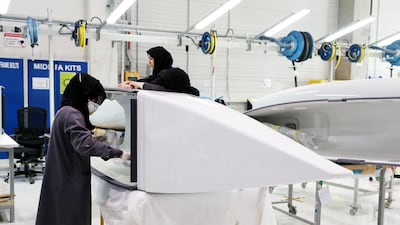Despite progress, the gaps in labour force participation between men and women remain large and the economic cost as it weighs down on productivity and growth is more significant than once thought, the executive director of the IMF said.
“We know that the un-level playing field between women and men has substantial economic costs and can impede the economic health of nations,” Christine Lagarde and Jonathan D. Ostry, deputy director of research at the IMF, wrote in a blog post to the IMF website. “What we are now learning is that these costs are even larger than we thought. Now that we see the full picture, the case for greater gender equity has become even more compelling.”
A study by the IMF found that barriers to women entering the labour force, which Ms Lagarde cited as factors like tax distortions, discrimination and social and cultural norms, cost more than once thought and that the upshot of closing gender gaps is even greater than previously believed. Therefore, the IMF appeals to policymakers on removing such barriers urgently, pointing out that no advanced or middle-income economy has achieved gender parity. In fact, none have reduced the gender gap below 7 percentage points, according to the IMF.
“Our analysis springs from the observation—supported by considerable microeconomic evidence—that women and men bring different skills and perspectives to the workplace, including different attitudes to risk and collaboration,” Ms Lagarde and Mr Ostry wrote. “Studies have also shown that the financial performance of firms improves with more gender-equal corporate boards.”
_________
Read more:
UAE employees can expect a 4.8 per cent pay rise next year
AE economy growth drives 'war on talent' for tech professionals
Abu Dhabi lowers fees for country-of-origin certificates
_________
The IMF said the benefits from narrowing gender gaps include increasing GDP by an average of 35 per cent for the bottom half of countries in its sample size, four-fifths of such gains come from adding workers to the labour force. But a full one-fifth of the gains are due to the gender diversity effect on productivity.
"A portion of the gain attributed to productivity is actually due to the increased participation of women over time," they said.
Ms Lagarde called for policy reforms that can help narrow gender gaps, such as giving women equal rights to own property and access credit, replacing family taxation with individual taxation, and providing tax credits to incentivise labour force participation among low-income earners. To increase women’s participation in the labour market, she pushes for reducing gender inequality in education and health care, including publicly financed maternity and paternity leave, expanded childcare and elder care. Improving access to transportation, electricity and improving water infrastructure can also help lift women’s participation in the workforce.
However, “there is no silver bullet”, according to the IMF.


